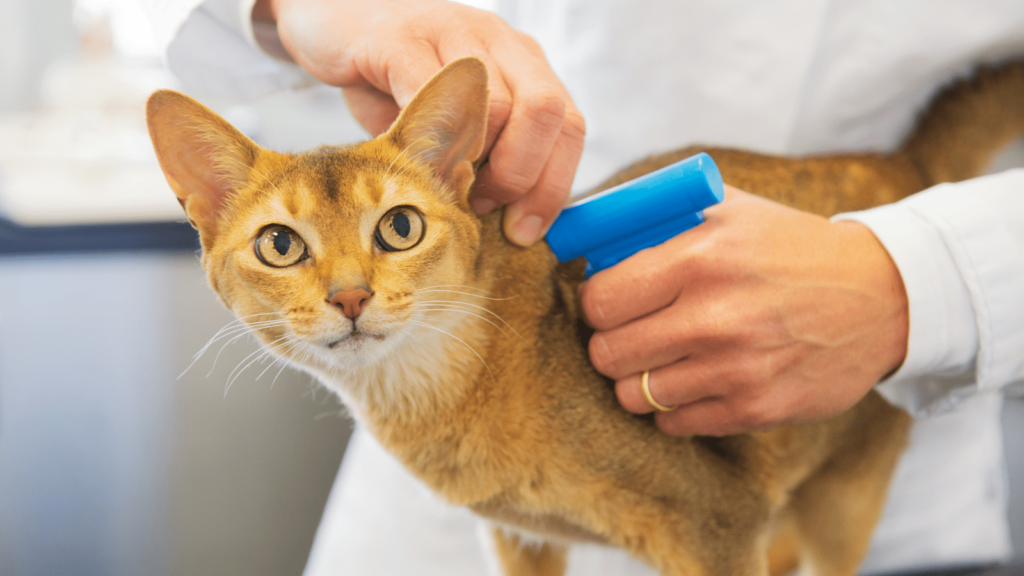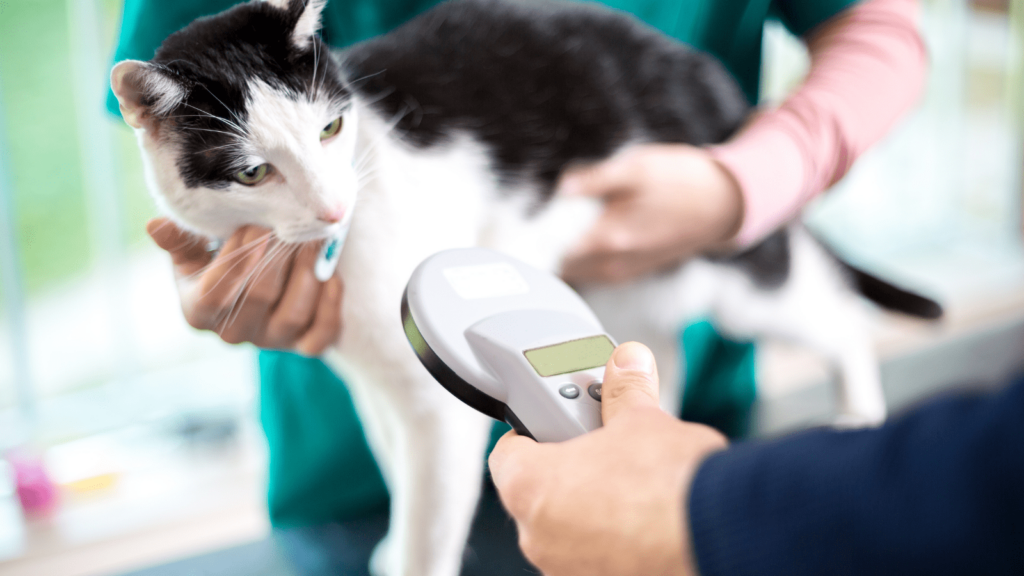
Losing a pet is the biggest fear of pet owners. Every day and every hour, many animals are reported lost. Today there are a few solutions to increase the chances of finding your pet, such as collars and ID tags. Although these can be useful, they are not as safe and effective as microchips. Would you like to know more about microchips and their benefits for our beloved pets? This blog post will help you.
What is a microchip?

A microchip is as small as a grain of rice. It is implanted under the animal’s skin with a needle and a syringe, between the shoulder blades at the back of the pet’s neck. Implanting the microchip is no more painful than a typical injection. No surgery or anaesthesia is required.
Microchips are computer chips that encode an identification number. This number is unique and increases the chances of finding your lost pet. This is because the microchip number is stored in a microchip database which includes information about the pet and its owner. Many vets and shelters routinely check new pets for microchips so that lost pets can be returned to their owners.
Why are microchips more effective than collars or ID tags?
Collars and identification tags can be useful when your pet is lost. However, both are not as secure and reliable as a microchip. They can easily break, come off, get damaged or become difficult to read with time and wear. There is therefore a risk that your pet cannot be identified and returned to you.
Whereas microchips are not likely to get damaged or fall off because they are found in the bodies of pets. This makes them totally reliable. However, it is important that pet owners ensure that their details are entered into the microchip database, as sometimes this is not the case.
However, it is advisable that your pet is fitted with a collar, an ID tag and a microchip. The perfect combo to increase the chances of finding your pet in case of loss!

A microchip is not a GPS device
A microchip does not allow pet owners to determine where their pet is. It is not a GPS signal that tracks the pet on a map. The chip only allows vets and shelters to get your data to contact you and return your pet. The microchip is only scanned when the animal is lost and not accompanied by its owner. So, there is no need to fear for your privacy. Moreover, it is the owners who decide what data they want to put on their pet’s chip.
How effective are microchips?

A study of over 7,700 stray pets in shelters showed that dogs without microchips were returned to their owners in 21.9% of cases, while dogs with microchips were returned to their owners in 52.2% of cases. Cats without microchips were returned to their owners in only 1.8% of cases, while cats with microchips were returned to their owners in 38.5% of cases.
For those microchipped animals that were not returned to their owners this was often due to incorrect or missing owner information in the microchip register database.
A study by Science Daily indicates that cats with microchips are 20 times more likely to be returned to their owners than cats without them. Dogs with microchips are 2.5 times more likely to be returned to their owners than those without.
Who can chip my pet?
Your vet will implant a chip in your pet. All you have to do is make an appointment and it’s done! Some shelters or local organisations also organise microchipping for several pets. It is important that the chip is implanted by a professional, it must be done correctly to avoid health risks to your pet.
Microchips are maintenance-free. The only thing is to always make sure that your data stored in the chip is always correct and up to date.



